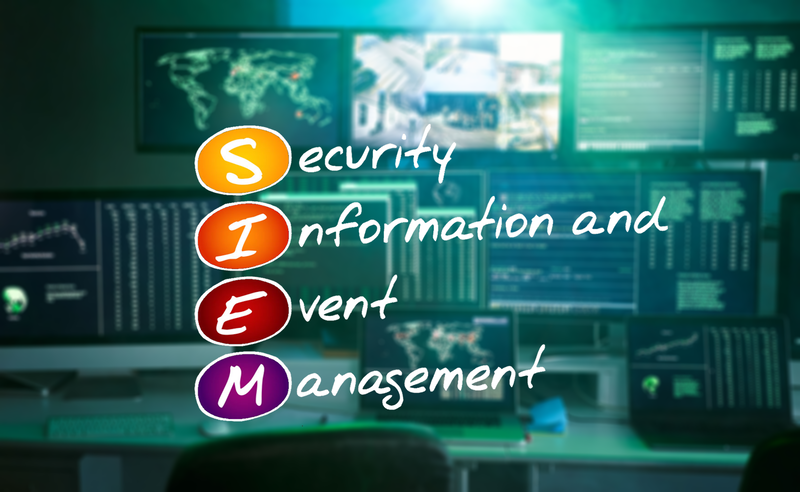

Can xDR Solution make our SOC modern?
Wherever I go for security consultations, this is the most frequently asked question, therefore I decided to write an article on this subject.
Basically, there are a variety of options available for a company to consider when developing its security architecture. A company may struggle to find the optimal solution for its needs amid the plethora of acronyms used to describe those solutions. XDR and SIEM are two security technologies that are sometimes mistaken with one another. While there is some duplication in terms of features, each solution serves a distinct function and accomplishes its aims in a unique way. If you want to construct a practical and long-lasting security architecture to back up your company’s SOC, you need to make sure you pick the proper solution.
Let’s get our feet wet with the basics first:
As we are all aware SOC, Security Operations Centre is an abbreviation for it. Security operations (such as managing security devices) are just one part of a SOC’s purview; other key areas of concentration include threat and vulnerability management, proactive monitoring, and incident certification.

However, it has a wide range of interpretations. No matter if it is provided in-house with its own employees, procedures, and tools or outside through outsourcing, it is evident that a SOC is a business function including a mix of people, processes, and technology.
Secondly, “Security Information and Event Management” (or “SIEM”) is an alternative acronym which is predominantly used in this scenario. Standardized consumption of log data from numerous security solutions paves the way for broader monitoring using specialized log sources, such as one-off programmes or specialized software that isn’t widely adopted. A security information and event management system. However, technology is simply that; it does not operate on its own.
Why, therefore, are they frequently mentioned together? We attribute this to past traditions, but things are changing. As the concept of detection and response emerged (from the realization that 100% prevention is unattainable), SOC teams selected the SIEM as their primary tool. However, as time progresses, a plethora of alternatives become available. Even the SOC is beginning to specialize in different areas.

SOAR – Security Orchestration & Automated Response, platforms are utilised by mature security operations teams to construct and execute multi-stage playbooks that orchestrate actions across an API-connected ecosystem of security solutions. Implementing and maintaining SOAR’s partner integrations and playbooks is difficult, expensive, and requires a highly developed SOC.
The other part is XDR and MXDR. To understand this, we must first learn about EDR, NDR, and MDR, since XDR is a mix of all three.
EDR – Endpoint Detection and Response lets an organisation monitor endpoints for abnormal behaviour and record every activity and event. It then compares data to detect advanced threats and automates responses like isolating infected endpoints from the network.
MDR – Managed detection and response is the abbreviation for this process. End-to-end addressing of cyber risks is made possible by MDR since it integrates the SOC function with the aforementioned solutions. The results of MDR are tangible. So in-short if you need a Managed SIEM/SOC, your should consider MDR
NDR – Network Detection and Response, is similar to EDR in that it provides a basic detection and response feature of Networks. The NDR method provides an overview and centres on how the various nodes in the network function together. This kind of insight is especially important in the modern data centre, which often includes non-physical components like the Internet and Software as a Service (SaaS) environments. The availability of EDR is limited.
XDR represents the development of EDR, or Endpoint Detection and Response. XDR expands the scope of detection beyond endpoints to provide detection, analytics, and response across endpoints, networks, servers, cloud applications, SIEM, and much more.
This provides a unified view of multiple tools and attack vectors through a single pane of glass. This enhanced visibility contextualizes these threats to facilitate triage, investigation, and swift remediation efforts.
XDR automatically accumulates and correlates data across multiple security vectors, allowing for faster threat detection so that security analysts can respond before the scope of the threat expands. Pre-tuned detection mechanisms and out-of-the-box integrations across multiple products and platforms enhance productivity, threat detection, and forensics.
XDR extends beyond the endpoint to make decisions based on data from additional products and can take action across your infrastructure by acting on email, network, identity, and more.
XDR in SOAR’s context, Through its Marketplace, XDR will facilitate interconnections across ecosystems and provide tools for automating routine tasks in relation to third-party security measures. The goal of XDR is to be a “SOAR-lite” solution, meaning that it requires no coding knowledge and can be used immediately.
How is XDR different from SIEM?
Some individuals believe we are characterizing a Security Information and Event Management (SIEM) tool differently when we discuss XDR. However, XDR and SIEM are distinct entities.
In other words, SIEM gathers, analyses, and saves enterprise log data. SIEM began by gathering log and event data from practically any organizational source for several use cases. Governance and compliance, rule-based pattern matching, UEBA, and IOC/atomic indicator hunting across telemetry sources were among them.
SIEM tools require extensive fine-tuning and implementation. Security teams may disregard vital SIEM signals due to SIEM alert overload. SIEMs are passive analytical tools that issue alerts, even when they collect data from dozens of sources and sensors.
The XDR platform includes behaviour analysis, threat intelligence, behaviour profiling, and analytics in an effort to address the shortcomings of the SIEM tool in detecting and responding to targeted attacks.
What is the Difference Between XDR and SIEM?
Both XDR and SIEM are designed to improve an organization’s threat management capabilities by gathering and analyzing data regarding security in a single, centralized location. This can be done by either automating or manually performing these tasks. But these two things are not the same thing at all.
The following are some of the primary distinctions between XDR and SIEM:
| SIEM Tool | XDR Tool |
|---|---|
| SIEM solutions provide organizations with centralized log management and analysis capabilities. | XDR’s main goal is to use the information it gathers to improve threat detection and reaction. |
| SIEM solutions frequently necessitate considerable management effort to attach them to data sources and configure their alerts. | XDR systems are made to work better with the security architecture of an organisation and send out useful alerts. |
| A SIEM is mostly a tool for analyzing data. It can give SOC researchers the data and alerts they need to find possible threats to the organisation. | These capabilities are expanded further by XDR security systems, which include the capacity to support and coordinate response activities inside a single solution. |
Can XDR / MXDR make our SOC modern?
Absolutely yes in my personal opinion because the amount of manual labor that security analysts have to perform is eased by XDR. An XDR system can detect sophisticated threats in a proactive and speedy manner, which can increase the productivity of the security or SOC team and yield a large gain in ROI for the organisation. If we see in terms of comprehensive visibility (in numbers), it reduces MTTD, MTTI and MTTR and moreover it uses AI for automation and these are the reasons behind XDR’s Growing Popularity and generating buzz. but wait a second…. does it replace SIEM?
You should have realized this by now. The answer is absolutely NO, though XDR does many things in a faster way however, they do not have the level of customization that can be accomplished with SIEM tools and continue to place more emphasis on the amount of time it takes to gain value than on the amount of customization that can be done over the longer term.
Do you need assistance deciding which detection and response solution will best meet your needs? Check out this article of mine – Here we go…!!







